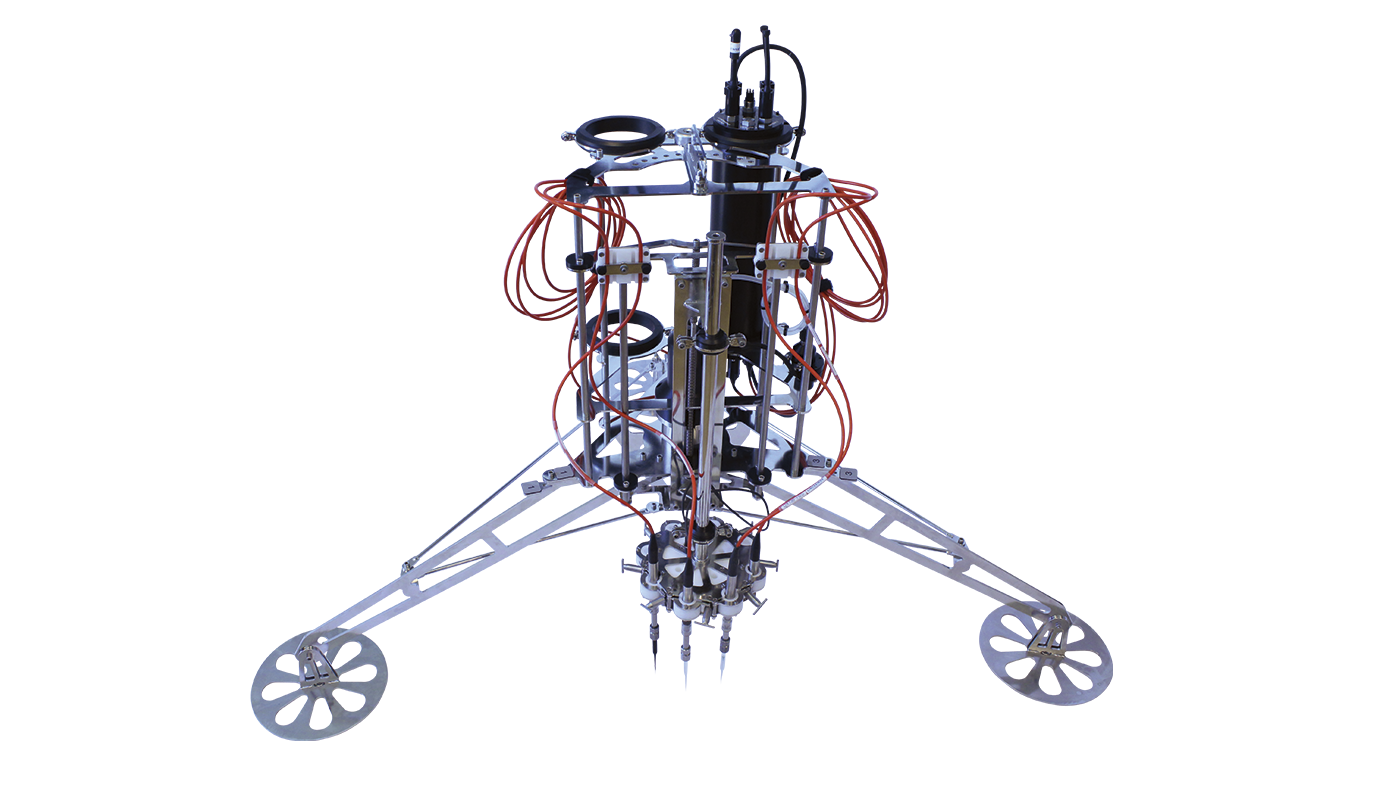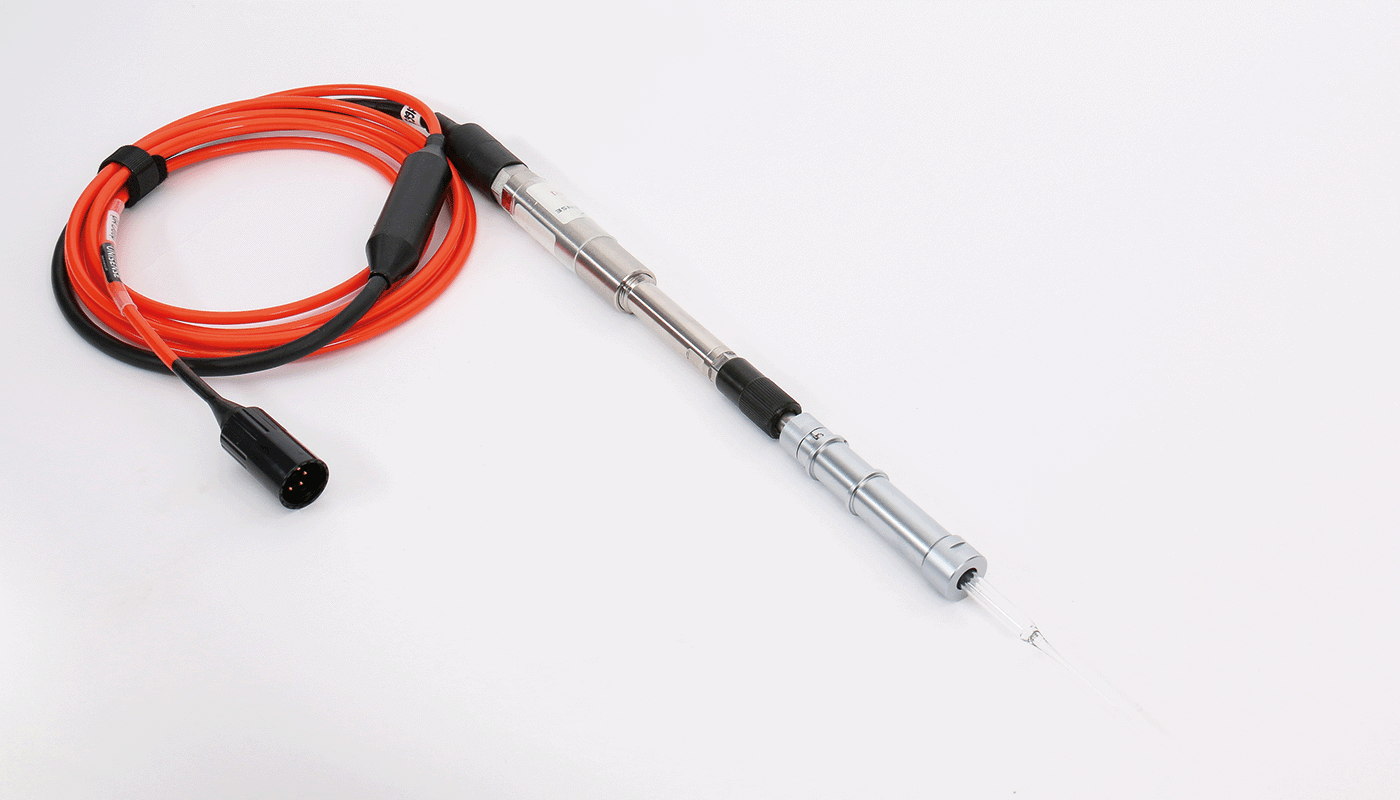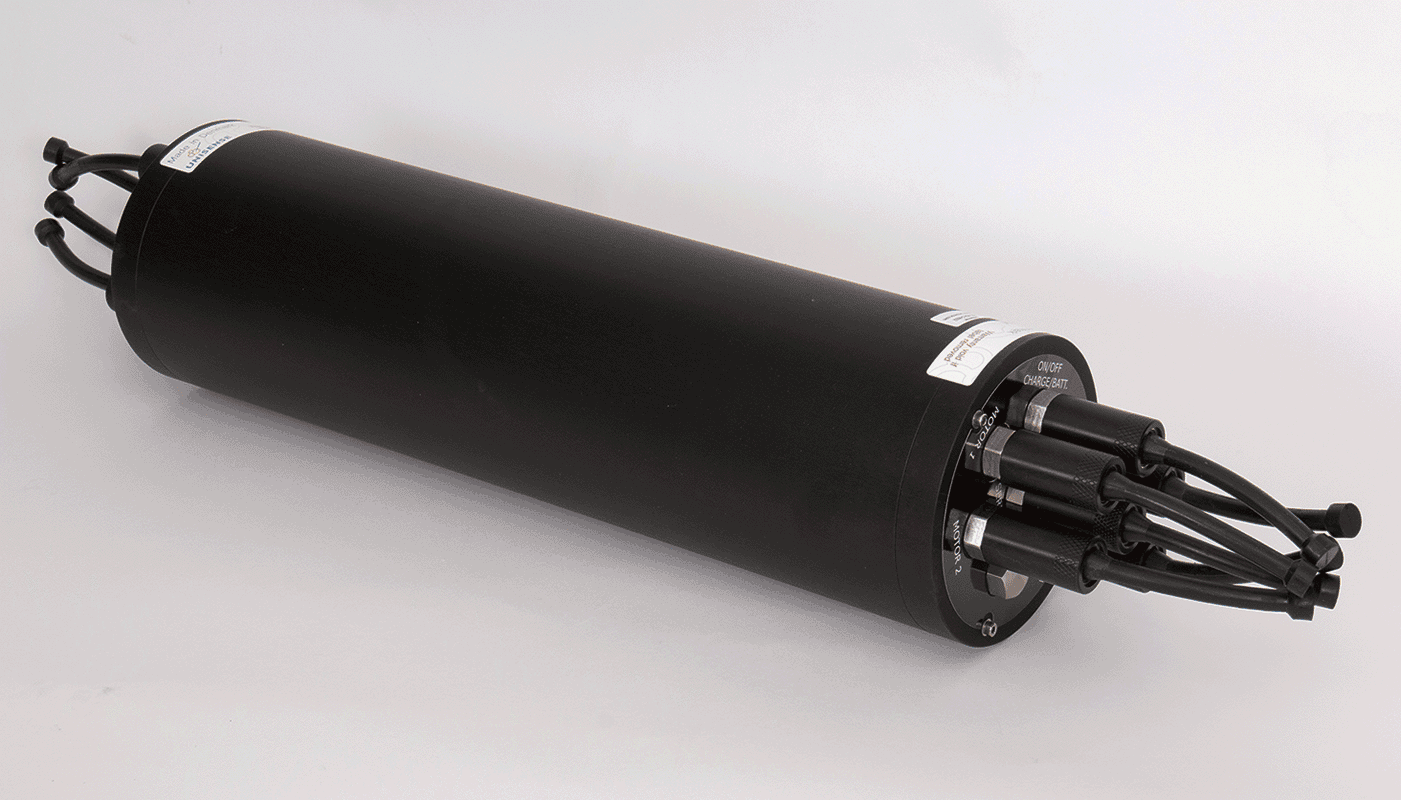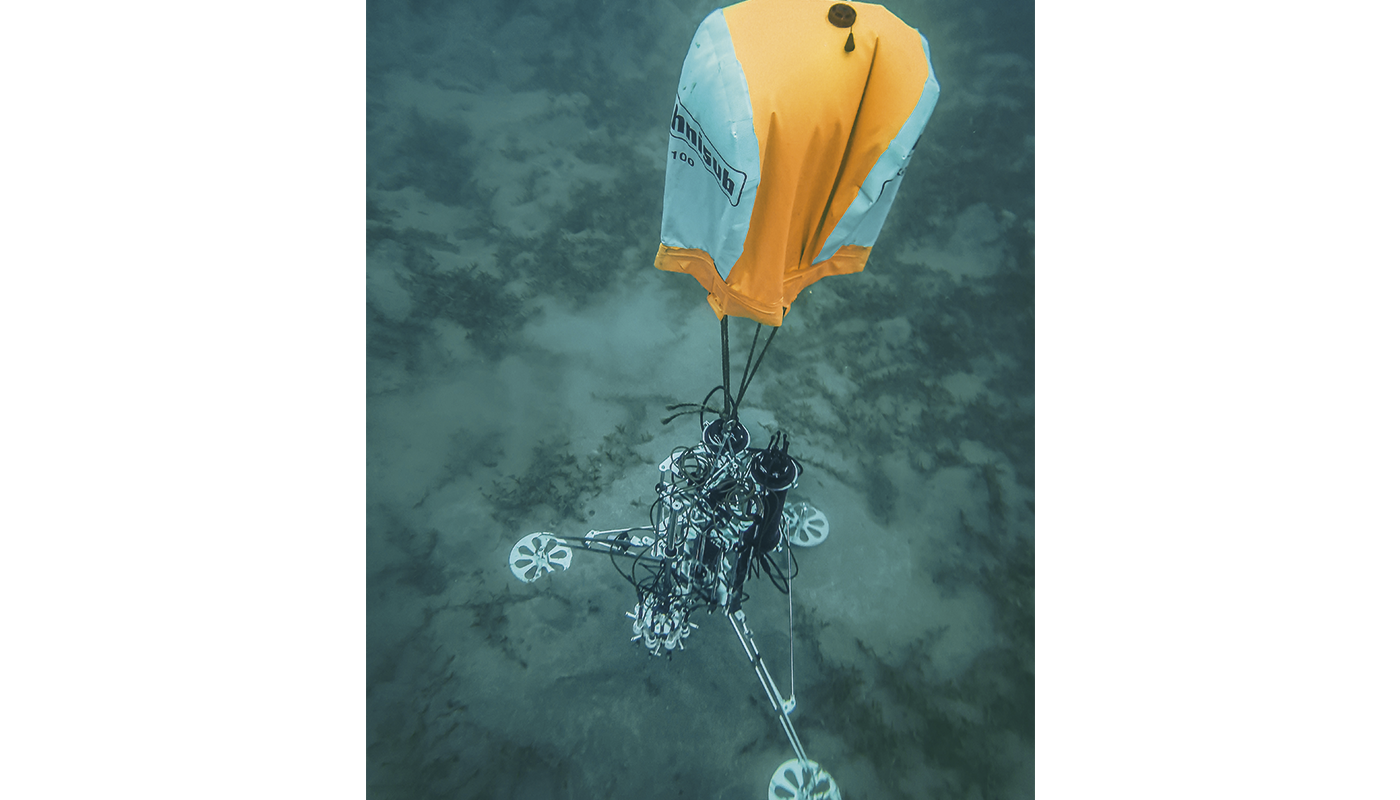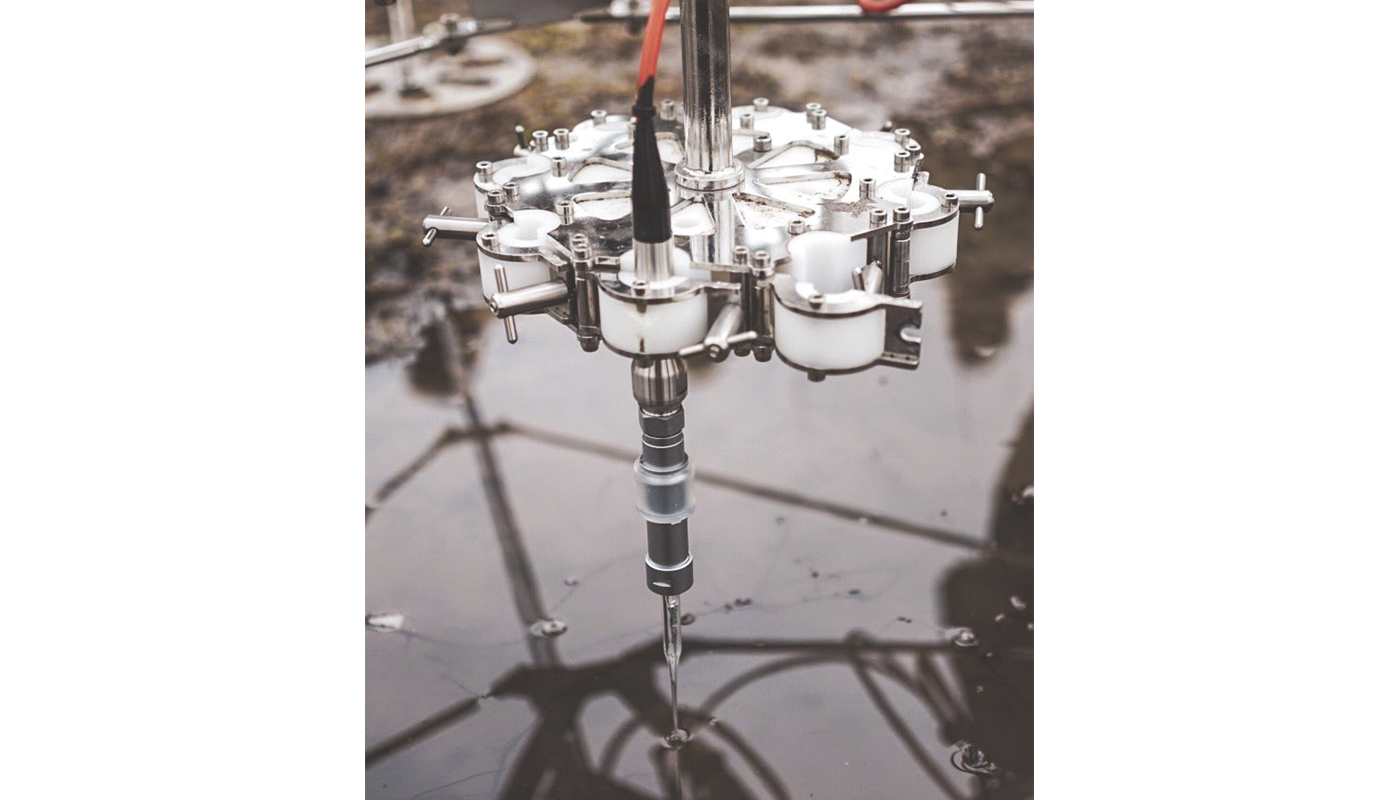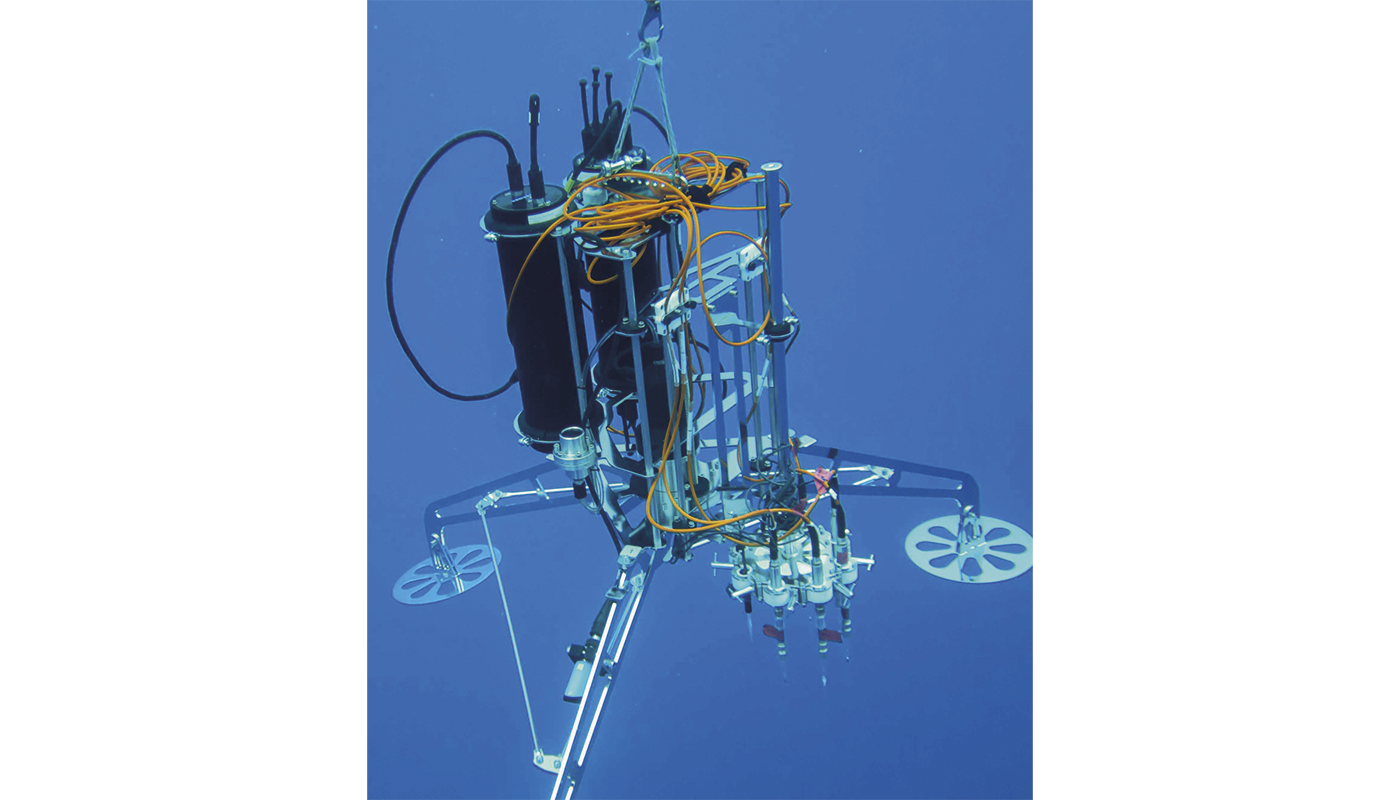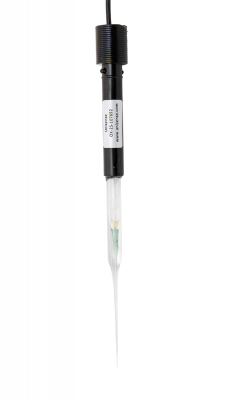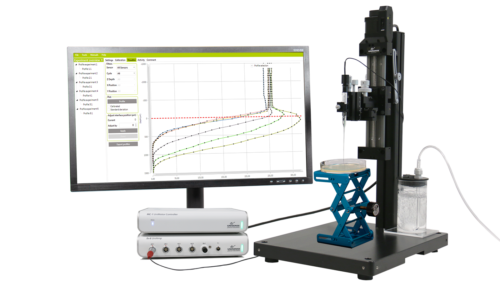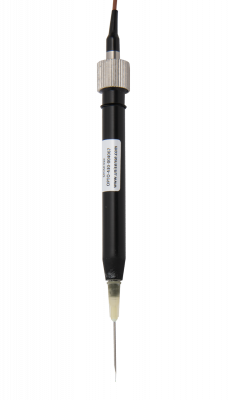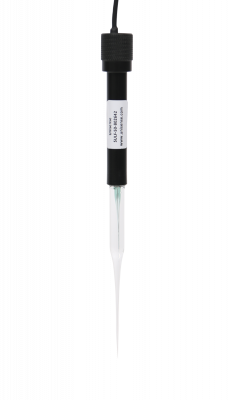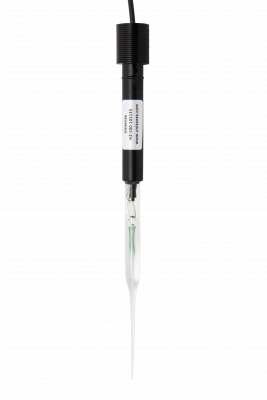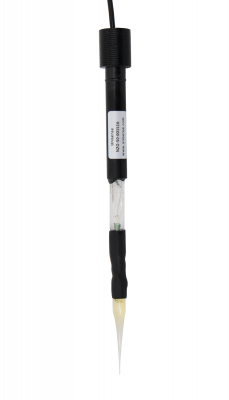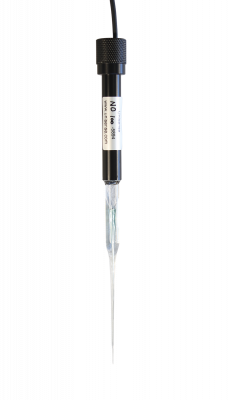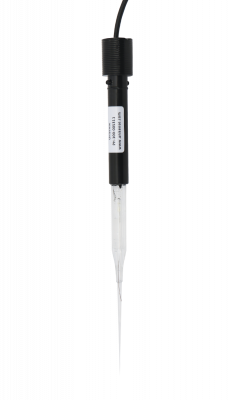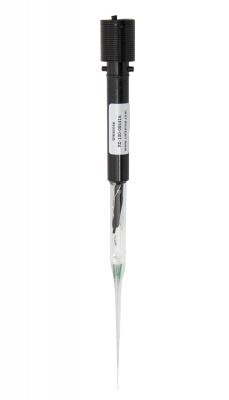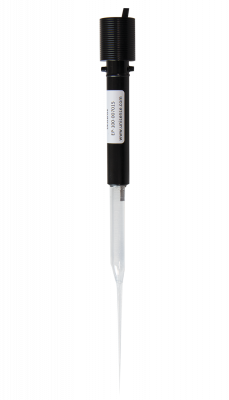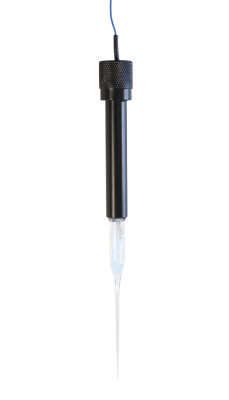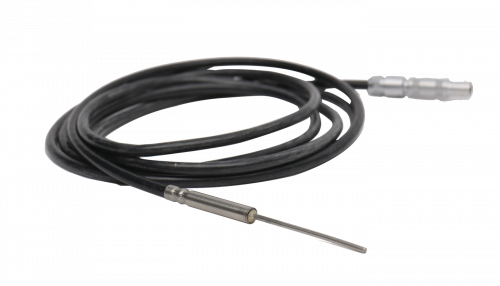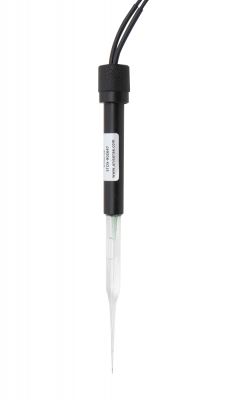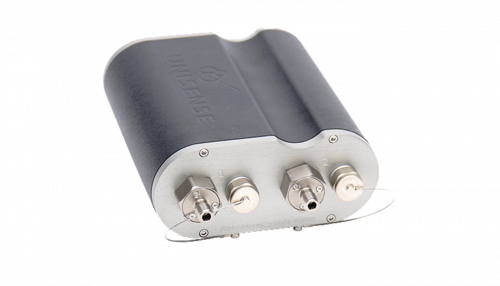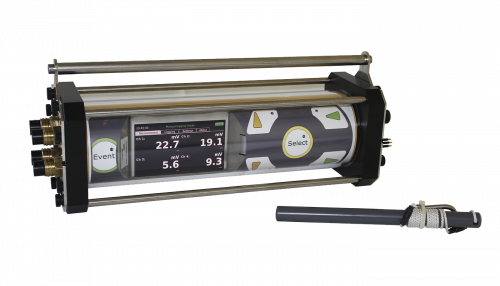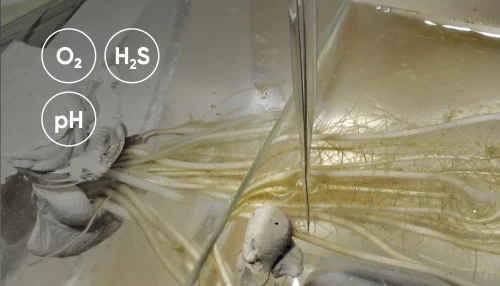An "Integrated Sediment Disturber" (ISD) to study the impact of repeated physical perturbations on sedime…
Soltwedel, T. et al. (2008),
Limnology and Oceanography: Methods,
vol. 6,
307-318
Soltwedel, T., Lansard, B., Gilbert, F., Hasemann, C., Bell, E., Sablotny, B., Eagle, M., Kershaw, P., Rabouille, C., Soltwedel, Thomas, Lansard, Bruno, Gilbert, Franck, Hasemann, Christiane, Bell, Elanor, Sablotny, Burkhard, Eagle, Matthew, Kershaw, Peter, Rabouille, Christophe (2008),
Limnology and Oceanography: Methods,
vol.
6,
307-318
An Integrated Sediment Disturber (ISD) was developed to study the effects of repeated physical disturbances on sediment geochemistry and associated benthic fauna. The ISD is capable to generate a strong, more or less uniform mixing of surface sediments by three rotating fork-like disturber units of approximately 1 m in diameter. Perturbations can be set at different intensities and frequencies, e.g., on times scales of hours, days, or weeks, depending on the experimental design. The ISD carries an Autonomous Positioning Drive (APD) module, which allows the three-dimensional positioning of sensors by a programmable controller. The three circular disturbed zones and an undisturbed control area in-between can be monitored at specified frequencies using a microprofiler with microelectrodes for measuring various parameters (e.g., oxygen, pH, hydrogen sulphide). All operations are supervised by a digital stills camera. Sediment sampling at the start and end point using coring devices handled by divers (and potentially undertaken using a Remotely Operated Vehicle) provides material to study shifts in biodiversity of the small sediment-inhabiting biota and alterations in ecosystem functioning in response to perturbations and the changing geochemical characteristics of surface sediments. © 2008, by the American Society of Limnology and Oceanography, Inc.
10.4319/lom.2008.6.307
Transient biogeochemistry in intertidal sediments: New insights from tidal pools in Zostera noltei meadow…
Rigaud, S. et al. (2018),
Marine Chemistry,
vol. 200,
1-13
Rigaud, S., Deflandre, B., Maire, O., Bernard, G., Duchêne, J. C., Poirier, D., Anschutz, P. (2018),
Marine Chemistry,
vol.
200,
1-13
Several studies highlighted the occurrence of circular pools in intertidal flats of different coastal systems and their transient water chemistry over both tidal and diurnal cycles. However, little is known about (1) the response of benthic biogeochemical reactions and fluxes at the sediment-water interface over such short time scales, and (2) the role of these tidal pools in the biogeochemical functioning of coastal systems. Based on in situ microprofiles and water sampling, we investigated the dynamics of dissolved oxygen (O2), nutrients, sulfides and metals, and the associated fluxes at the sediment-water interface in tidal pools from the Arcachon Bay (Atlantic coast of France). Our integrative approach included several tidal and diurnal cycles over two different seasons in the presence and absence of Zostera noltei. The results show that water temperature and light irradiance were the main factors driving the biogeochemical functioning of the tidal pools, as they controlled the physiological activity of the microphytobenthos. Changes in light radiations induced diurnal fluctuations of O2 concentrations within surficial sediment, thus resulting in fluctuations of the O2 diffusive fluxes at the sediment-water interface and of the O2 penetration depth in sediment. At high tide, the increase in turbulence above the sediment induced the advection of oxygenated water within the first millimeters of sediment, resulting in a significant increase in porewater O2 concentrations and sediment O2 penetration depth. Porewater sulfide concentrations and apparition depth were concomitant with the O2 dynamic over both diurnal and tidal cycles, indicating that intermediate redox diagenetic processes were impacted by O2 dynamic over such short time-scale. The rapid changes in redox processes in the sediment column are confirmed by a significant flux of dissolved manganese toward the water column during nighttime. The consumption of nitrate and the release of ammonium and phosphate, associated to the mineralization of the organic matter in the surface sediment did not appeared related however to such short time cycles. The efflux of dissolved silica from the sediment was most likely associated with the enhanced dissolution of Si-bearing particles in surface sediment at higher temperatures, although silica uptake by Z. noltei was also noted. This study clearly shows that tidal pools function as natural incubators of transient biogeochemical processes. A rough assessment of the nutrient budget at the scale of the bay indicates the tidal pools may contribute significantly to the biogeochemical functioning of Arcachon Bay.
10.1016/j.marchem.2018.02.002
The potential role of plant oxygen and sulphide dynamics in die-off events of the tropical seagrass, Thal…
Borum, Jens et al. (2005),
Journal of Ecology,
vol. 93,
148-158
Borum, Jens, Pedersen, O., Greve, T. M., Frankovich, T. A., Zieman, J. C., Fourqurean, J. W., Madden, C. J., Borum, J. (2005),
Journal of Ecology,
vol.
93,
148-158
1. Oxygen and sulphide dynamics were examined, using microelectrode techniques, in meristems and rhizomes of the seagrass Thalassia testudinum at three different sites in Florida Bay, and in the laboratory, to evaluate the potential role of internal oxygen variability and sulphide invasion in episodes of sudden die-off. The sites differed with respect to shoot density and sediment composition, with an active die-off occurring at only one of the sites. 2. Meristematic oxygen content followed similar diel patterns at all sites with high oxygen content during the day and hyposaturation relative to the water column during the night. Minimum meristematic oxygen content was recorded around sunrise and varied among sites, with values close to zero at the die-off site. 3. Gaseous sulphide was detected within the sediment at all sites but at different concentrations among sites and within the die-off site. Spontaneous invasion of sulphide into Thalassia rhizomes was recorded at low internal oxygen partial pressure during darkness at the die-off site. 4. A laboratory experiment showed that the internal oxygen dynamics depended on light availability, and hence plant photosynthesis, and on the oxygen content of the water column controlling passive oxygen diffusion from water column to leaves and belowground tissues in the dark. 5. Sulphide invasion only occurred at low internal oxygen content, and the rate of invasion was highly dependent on the oxygen supply to roots and rhizomes. Sulphide was slowly depleted from the tissues when high oxygen partial pressures were re-established through leaf photosynthesis. Coexistence of sulphide and oxygen in the tissues and the slow rate of sulphide depletion suggest that sulphide reoxidation is not biologically mediated within the tissues of Thalassia. 6. Our results support the hypothesis that internal oxygen stress, caused by low water column oxygen content or poor plant performance governed by other environmental factors, allows invasion of sulphide and that the internal plant oxygen and sulphide dynamics potentially are key factors in the episodes of sudden die-off in beds of Thalassia testudinum. Root anoxia followed by sulphide invasion may be a more general mechanism determining the growth and survival of other rooted plants in sulphate-rich aquatic environments.
10.1111/j.1365-2745.2004.00943.x
Microphytobenthic production estimated by in situ oxygen microprofiling: Short-term dynamics and carbon b…
Denis, Lionel et al. (2012),
Journal of Soils and Sediments,
vol. 12,
1517-1529
Denis, Lionel, Gevaert, François, Spilmont, Nicolas (2012),
Journal of Soils and Sediments,
vol.
12,
1517-1529
Purpose: Short-term temporal variability of microphytobenthic primary production is suspected to be of the same magnitude as seasonal variability, but data remain very scarce due to methodological limitations. In this context, a 6-day in situ high-frequency survey was performed in a temperate intertidal mudflat using an automated microprofiling system. Materials and methods: In situ microphytobenthic primary production was measured using an automated acquisition system for oxygen microprofiles. More than 900 microprofiles, acquired during six consecutive days in April 2008, allowed the establishment of robust relationships between oxygen production and irradiance. Moreover, simultaneous measurements of fluorescence parameters and oxygen microprofiles during two diurnal emersion periods led to significant correlations between relative electron transport rate (rETR) and gross oxygen production (GOP). Results and discussion: The use of an automated system allowed the estimation of oxygen exchanges during both immersion and emersion periods, and to our knowledge, this is the first study presenting continuous measurements during six consecutive days. The intertidal mudflat studied here was characterized by a maximum net oxygen production of 6. 74 mmol O2 m-2 h-1. Evidence for microphytobenthic migration behavior was observed during several periods and induced important depletion in oxygen production while irradiance remained high. Consequently, estimations of GOP from fitted photosynthesis-irradiance curves (P-I curves) showed an overestimation of 31 % compared to the GOP actually measured during the whole deployment. Conclusions: This study confirmed that oxygen microsensors may be used to record microphytobenthic primary production, as resulting dynamics agreed with fluorescence data, while production values were in accordance with those presented in the literature. High-frequency microprofiles acquisition may be an easy way to monitor short-term temporal changes in microphytobenthic primary production in order to calculate accurate carbon or oxygen budgets for intertidal areas. © 2012 Springer-Verlag.
10.1007/s11368-012-0588-8
Using small-scale measurements to estimate hypolimnetic oxygen depletion in a deep lake
Schwefel, Robert et al. (2018),
Limnology and Oceanography,
vol. 63,
S54-S67
Schwefel, Robert, Steinsberger, Thomas, Bouffard, Damien, Bryant, Lee D., Müller, Beat, Wüest, Alfred (2018),
Limnology and Oceanography,
vol.
63,
S54-S67
Low oxygen concentrations in lakes and reservoirs are an ongoing environmental concern, particularly in light of increasing anthropogenic activity and climate change. Oxygen depletion processes in lakes are still not completely understood and a variety of models have been proposed based on limited field observations. Here, we present field measurements of oxygen depletion processes in a deep lake, Lake Geneva (Switzerland). The aim of this study was to quantify three basic processes controlling hypolimnetic oxygen depletion and their relative contribution to the total oxygen depletion (TOD) rate. Sediment oxygen uptake (SOU) and the flux of reduced substances were estimated based on oxygen microprofile measurements and sediment core data of reduced substances. Acoustic Doppler current profiler measurements and hydrodynamic modeling were used to ensure that SOU was measured under typical hydrodynamic conditions. Comparison with long-term monitoring data allowed for an estimate of the relative importance of SOU and water column mineralization (WCM). Results show a decrease in both SOU and WCM down to mid-depth which could not be explained by changes in hydrodynamic conditions or temperature. Below mid-depth, TOD increased due to an enhanced sediment area to water volume ratio (α). This vertical pattern of oxygen depletion is driven by (1) lake morphometry paired with increasing α, and (2) decreasing organic matter mineralization in the water column with depth. The findings are explained by a model which separates the oxygen depletion into an exponentially decreasing component, representing the fast-decaying fraction of the organic matter, and a constant background component.
10.1002/lno.10723
Organic matter budget in the Southeast Atlantic continental margin close to the Congo Canyon: In situ mea…
Rabouille, Christophe et al. (2009),
Deep-Sea Research Part II: Topical Studies in Oceanography,
vol. 56,
2223-2238
Rabouille, Christophe, Caprais, J. C., Lansard, B., Crassous, P., Dedieu, K., Reyss, J. L., Khripounoff, A., Rabouille, C. (2009),
Deep-Sea Research Part II: Topical Studies in Oceanography,
vol.
56,
2223-2238
A study of organic carbon mineralization from the Congo continental shelf to the abyssal plain through the Congo submarine channel and Angola Margin was undertaken using in situ measurements of sediment oxygen demand as a tracer of benthic carbon recycling. Two measurement techniques were coupled on a single autonomous platform: in situ benthic chambers and microelectrodes, which provided total and diffusive oxygen uptake as well as oxygen microdistributions in porewaters. In addition, sediment trap fluxes, sediment composition (Org-C, Tot-N, CaCO3, porosity) and radionuclide profiles provided measurements of, respectively input fluxes and burial rate of organic and inorganic compounds. The in situ results show that the oxygen consumption on this margin close to the Congo River is high with values of total oxygen uptake (TOU) of 4±0.6, 3.6±0.5 mmol m-2 d-1 at 1300 and 3100 m depth, respectively, and between 1.9±0.3 and 2.4±0.2 mmol m-2 d-1 at 4000 m depth. Diffusive oxygen uptakes (DOU) were 2.8±1.1, 2.3±0.8, 0.8±0.3 and 1.2±0.1 mmol m-2 d-1, respectively at the same depths. The magnitude of the oxygen demands on the slope is correlated with water depth but is not correlated with the proximity of the submarine channel-levee system, which indicates that cross-slope transport processes are active over the entire margin. Comparison of the vertical flux of organic carbon with its mineralization and burial reveal that this lateral input is very important since the sum of recycling and burial in the sediments is 5-8 times larger than the vertical flux recorded in traps. Transfer of material from the Congo River occurs through turbidity currents channelled in the Congo valley, which are subsequently deposited in the Lobe zone in the Congo fan below 4800 m. Ship board measurements of oxygen profiles indicate large mineralization rates of organic carbon in this zone, which agrees with the high organic carbon content (3%) and the large sedimentation rate (19 mm y-1) found on this site. The Lobe region could receive as high as 19 mol C m-2 y-1, 1/3 being mineralized and 2/3 being buried and could constitute the largest depocenter of organic carbon in the South Atlantic. © 2009 Elsevier Ltd. All rights reserved.
10.1016/j.dsr2.2009.04.005
